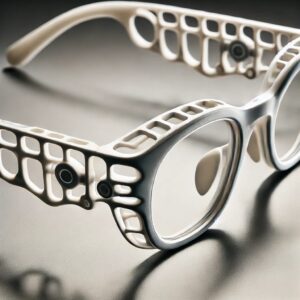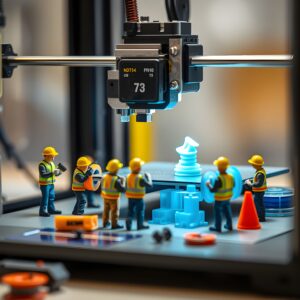3D Printed Medical Glasses: Revolutionizing Eyewear

Explore how 3D printed medical glasses offer personalized fit, comfort, and durability. Learn about the advancements in eyewear technology and customization with 3D printing.
3D Printed Medical Glasses
3D printing technology is making waves in the eyewear industry, particularly in the medical field. It offers a new level of customization, comfort, and accessibility for patients requiring corrective lenses or specialized frames. 3D printed medical glasses are transforming how we think about and produce eyewear, offering tailored solutions that cater to individual needs.
1. The Need for Customization in Medical Eyewear:
Traditional eyewear manufacturing often involves standard sizes and shapes, which may not fit all individuals comfortably or meet their specific needs. 3D printing addresses this issue by allowing for fully customized frames and lenses.
Tailored Fit and Comfort: With 3D printing, eyewear can be designed to fit the exact dimensions of a patient’s face, providing a level of comfort and support that is difficult to achieve with mass-produced frames. This is particularly beneficial for patients with unique facial structures or those requiring specialized fittings.
Complex Prescription Integration: Patients with complex prescriptions, such as those requiring bifocal or progressive lenses, can benefit from 3D printed glasses. The technology allows for precise integration of lenses into frames, ensuring optimal placement and comfort.
2. Enhanced Durability and Material Options:
3D printing allows for the use of various materials that can enhance the durability and functionality of medical glasses. This is crucial for patients who need eyewear that can withstand daily wear and tear.
Material Choices: 3D printed eyewear can be made from materials such as nylon, polycarbonate, or titanium. Each material offers different properties; for example, nylon provides flexibility and comfort, while titanium offers lightweight durability.
Enhanced Strength and Flexibility: Unlike traditional plastic frames, which can be brittle, 3D printed frames can be designed with flexible hinges and reinforced structures, making them more resilient to breakage.
3. Streamlined Production and Accessibility:
The production process for traditional eyewear can be time-consuming and costly, especially for custom orders. 3D printing streamlines this process, making custom eyewear more accessible and affordable.
Reduced Production Time: 3D printing significantly reduces the time it takes to produce custom eyewear. Once the design is finalized, printing and assembly can be completed in a matter of hours, as opposed to the weeks or months required for traditional manufacturing.
Cost-Effective Solutions: By eliminating the need for molds and reducing material waste, 3D printing lowers production costs. This makes custom medical glasses more affordable, providing patients with access to high-quality, personalized eyewear at a fraction of the traditional cost.
3D printed medical glasses are revolutionizing the eyewear industry by offering a level of customization, comfort, and durability previously unattainable with traditional methods. By leveraging this technology, we can create eyewear that meets the unique needs of each patient, enhancing their quality of life and providing a better fit for their vision needs.
check out our next article on the Steps in Creating A Custom 3D Printed Medical Glasses https://master3dp.com/creating-custom-…-medical-glasses/




